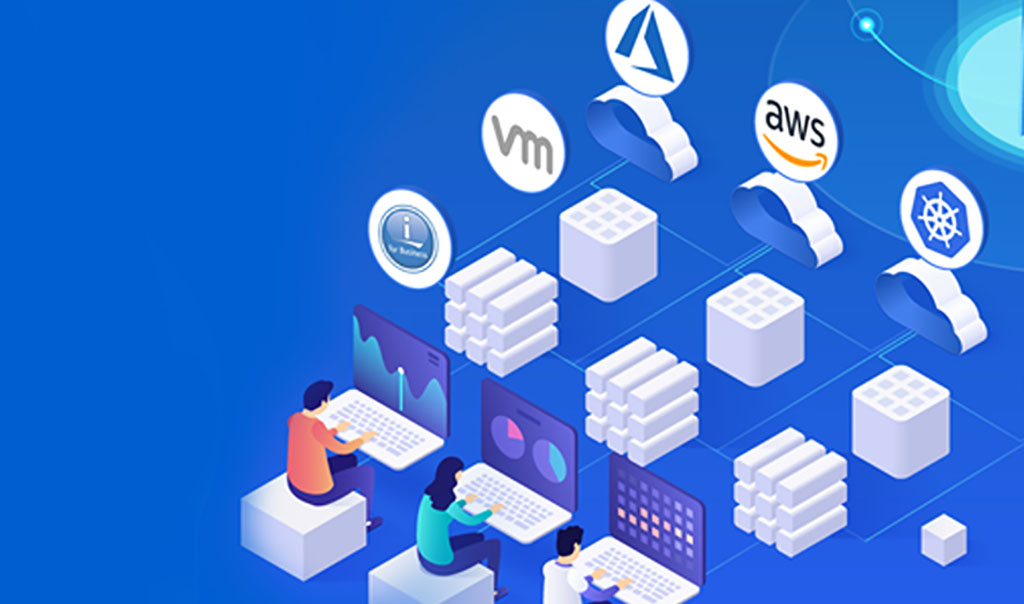The High Cost of Poor Cloud Management
Connectria
Author
Date
July 18, 2019

Most enterprises these days have complex and diverse needs when it comes to infrastructure and applications. IT departments need to juggle legacy applications and cloud-native apps, integrate on-prem and cloud environments, develop microservices, manage multiple cloud platforms, and more. All this is being done in the face of a record shortage of IT talent.
It does not help that things like governance and access management, security, and cost estimating can all be radically different from solution to solution. Even if a company has managed to move most of its environment and operations to the cloud, problems can arise simply from the mismanagement of those cloud platforms. Here’s an even scarier thought: While most organizations are trying to wrap their heads around which public cloud platform offers the best bang-for-the-buck, they might actually be bleeding their bottom line because of poor cloud management. Below are three examples of the mounting costs to organizations that stem from overall poor cloud management.
1 Poor Management Can Lead to Outages—and Loss
Just as with any other kind of IT service or product, cloud services have to be managed carefully to achieve specific reliability and availability goals. This includes ensuring network availability, planning for disaster recovery, testing application, and database stability, and otherwise planning for redundant infrastructure.
Unfortunately, most companies are bad at this sort of management. Things don’t have to go colossally wrong for there to be a huge cost, either; small disruptions in service can add up in costly ways. One survey by Switzerland-based Veeam Software found that 73 percent of companies had failed to meet users’ demands for uninterrupted access to data and services, as outlined in their own SLAs.
In 2019, those failures have translated into $20 million lost, with 54 percent of companies facing a loss in customer confidence due to outages. Almost every vendor touts the reliability of the cloud. But outages still happen, and many times these can be traced to a failure to manage the cloud successfully. For example:
- Untested software updates that “break” something in the system
- Lack of appropriate patching and updating
- No data redundancy, disaster recovery
- Failure to anticipate and plan for a DDoS attack
- Inability to detect and stop malware
- Misallocation of user privileges
- Sheer human error
In short, poor cloud management has a direct impact on availability and profitability.
Budget Bloat from Poor Cloud Cost Management
Without a doubt, one of the biggest challenges in cloud governance is cost management. One study found that a full 29 percent of respondents identified “cost management” as their single greatest cloud management challenge. And a more extensive study done this year, by RightScale, found that 64 percent of enterprises felt that optimizing their existing use of the cloud, especially when it came to costs, was their top priority moving forward.
Why is cost management so tricky when it comes to the cloud? For one thing, most developers simply don’t have the time to stay on top of things, which means that managing the environment takes a back seat to whatever projects are hot. Things might be set up correctly, but without ongoing monitoring and maintenance, additional expenses add up. Below are some examples of expenses that can add up if not properly managed:
- Egress/passing data between multiple clouds (egress charges)
- “Orphan” snapshots left behind when instances are deleted
- Access for remote workers
- Unused static IP addresses
- Storage for old/obsolete data
- Incorrect storage for rarely accessed data (“cold” vs. “warm” storage)
Things are especially tricky if your organization uses multiple clouds. It pays to do ongoing analysis of your cloud usage across clouds. Distributing workloads appropriately by scheduling start- and stop-times for non-essential resources can be helpful.
2 DevOps Can’t Do Their Job
It’s a problem that happens far too often: Developers who don’t have time to develop because they have to manage their cloud environments. They have to worry about things like availability and uptime, and it eats away at their ability to get the next piece into production. In short, DevOps becomes so overwhelmed with the “Ops” half that the “Dev” half never gets done, or else gets done poorly.
Now consider this: If you can double the release cadence for products, you’ll eventually reduce your time to market by 50 percent. How much is that worth to the organization?
3 Are CMPs or MSPs Part of the Solution?
Ideally, your organization should have a well-implemented cloud management strategy that enables the needed degree of control over your cloud environments, hopefully without introducing new inefficiencies. A strategy, though essential, will not be enough, however. A good strategy must assign responsibility for ongoing cloud maintenance and management and make provisions for doing the prescribed activities quickly and easily.
This is where Cloud Management Platforms (CMPs) come in. CMPs help teams oversee their cloud activity, including migration, resource deployment, use, and capacity monitoring, workload balancing, disaster recovery, and more. Administrative control can extend over the infrastructure, platforms, applications, and/or data, depending on the use to which the cloud(s) is put.
Outsourcing some or all of your cloud management is an option as well. A managed service provider (MSP), like Connectria, can bring a level of expertise and automation while also helping you manage costs for your cloud environments. Indeed, over 30 percent of executives are outsourcing the management of their organization’s infrastructure and application portfolio. Whatever direction you take, do it soon. Poor cloud management has a way of hiding and sneaking up on you. When it does, the costs will far outweigh any benefits derived from not taking cloud management seriously.
Contact Connectria for more information.
Keep Reading
Prepare for the future
Tell us about your current environment and we’ll show you the best path forward.
Fast track your project. Give us a call.





